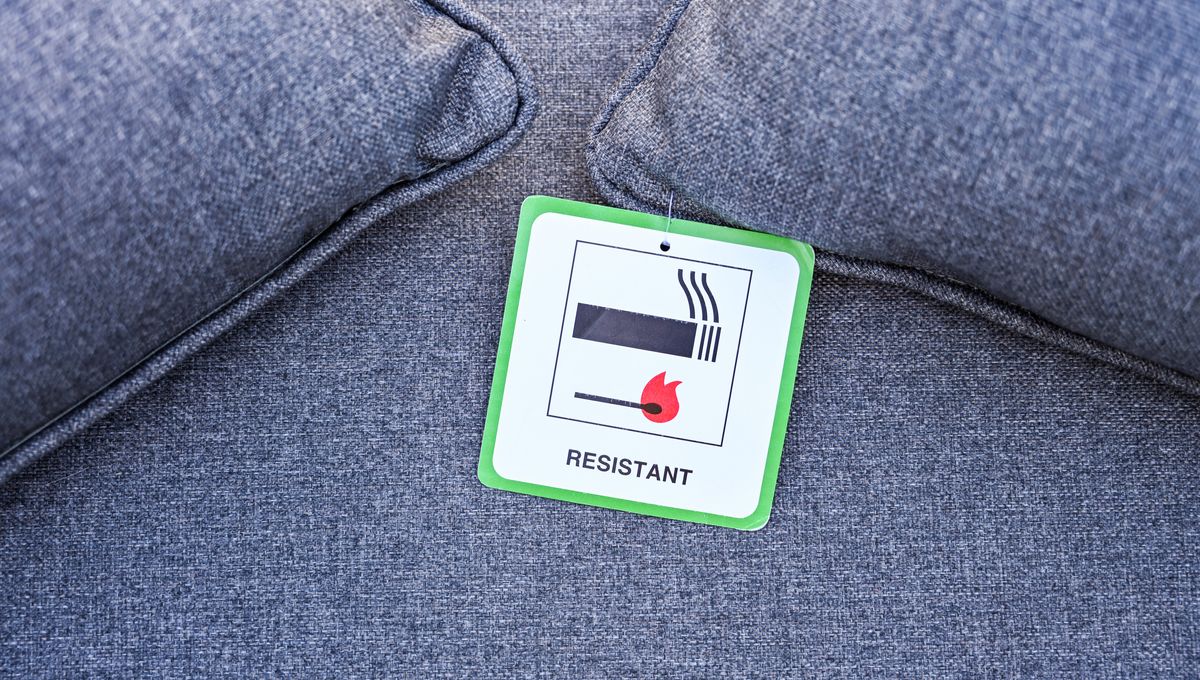
Many of us are being exposed to chemicals linked to an increased risk of cancer, and a new study has found that they can be absorbed through our skin. The ironic part? They were originally intended to help save our lives.
Protecting our household items from bursting into flames seems like a no-brainer, right? This is why, for decades now, manufacturers have added a type of chemical compound called polybrominated diphenyl ethers (PBDEs) to things like upholstery, plastics, electronics, and other everyday objects to act as a flame retardant.
But in a cruel twist of fate, it turns out that these PBDEs – long known to be associated with various negative health effects – can be absorbed so easily through the skin via contact with microplastics that they turn up in the blood within 24 hours.
“This is the first experimental evidence to show that certain additive chemicals linked with so many diseases – including cancer, endocrine disruption and reproductive problems – enter the human body from dermal exposure to microplastics,” said Dr Ovokeroye Abafe, now a lecturer in Environmental Sciences at Brunel University and co-author of the study, in a statement.
“These results provide important experimental evidence for regulators and policy makers to legislate for microplastics and safeguard public health against such exposure,” he added.
By using skin models 3D printed using human keratinocytes – the main type of cell found in the outermost layer of the skin – the team behind the study measured the amount of two common forms of PBDE present in microplastics that were absorbed over 24 hours.
In what amounts to the first experimental evidence that these compounds can be taken in through the skin, the results showed that as much as 8 percent of the exposure dose of PBDEs could be taken in via touch alone, with the effect being strongest in hydrated – or “sweaty” – skin.
That may not sound like much, but remember: these are present in objects we may interact with many times a day, every day. “These chemicals are persistent, so with continuous or regular exposure to them, there will be a gradual accumulation to the point where they start to cause harm,” Abafe pointed out in another statement.
So, if these chemicals are so dangerous, why are they so ubiquitous? The problem is that, despite mounting evidence of the health dangers of PBDEs from various animal and longitudinal human studies, the exact harm caused by exposure to microplastics such as the ones PBDEs were present in isn’t well understood. That makes regulation difficult – and while some more obviously harmful compounds have been banned or voluntarily removed from the market, they have long half-lives and many are still present in older products.
The problem is especially worrisome in the US, where tests have found that the population has levels of a specific PBDE called BDE-47 in their blood three to ten times greater than those found in Europeans.
“Unfortunately, there are myriads of toxic additive chemicals, ranging from plasticizers to stabilizers in microplastics, some of which are not regulated, that can potentially find their way into the human system,” Abafe said. “Also significant is the uptake of these toxic additive chemicals through other human exposure pathways such as ingestion and inhalation of microplastics, of which nothing is known on the body burden of these additives.”
The study is published in the journal Environment International.
Source Link: Toxic Fireproof Chemicals Found In Everyday Items Can Be Absorbed Through The Skin